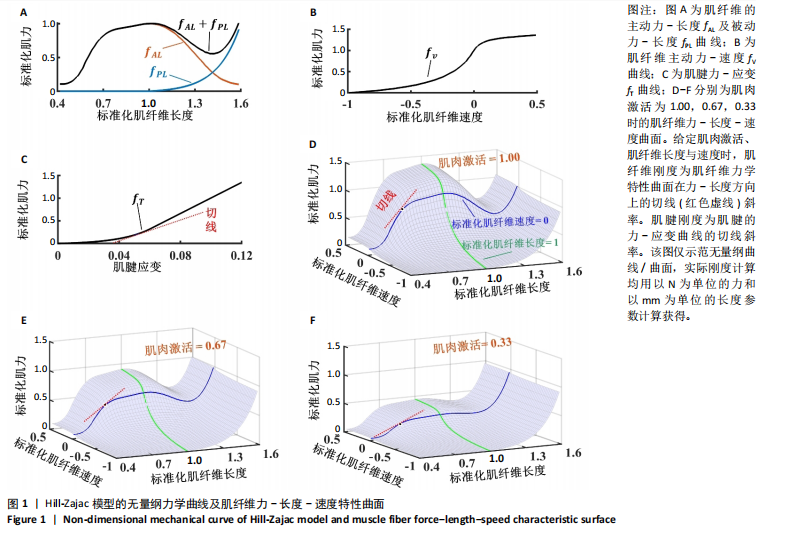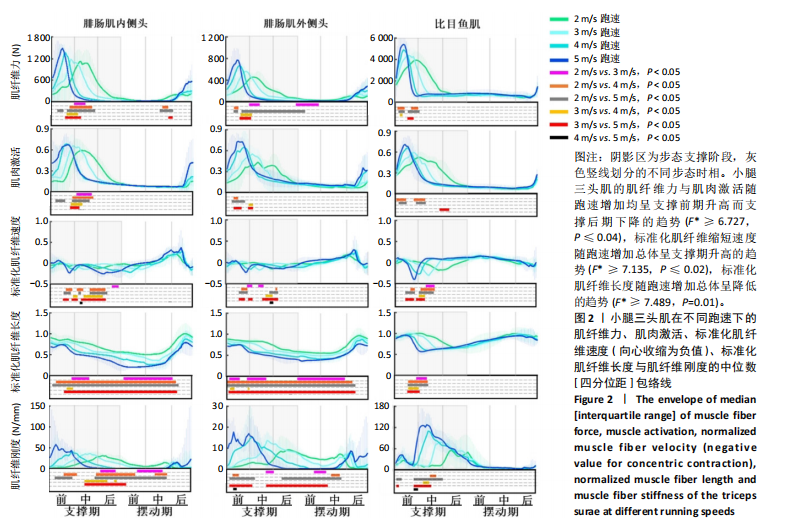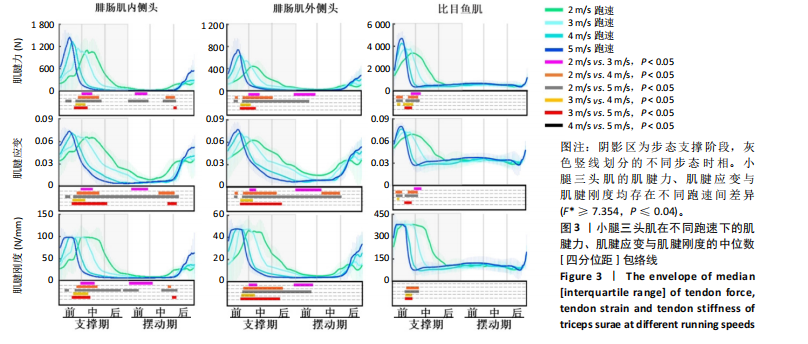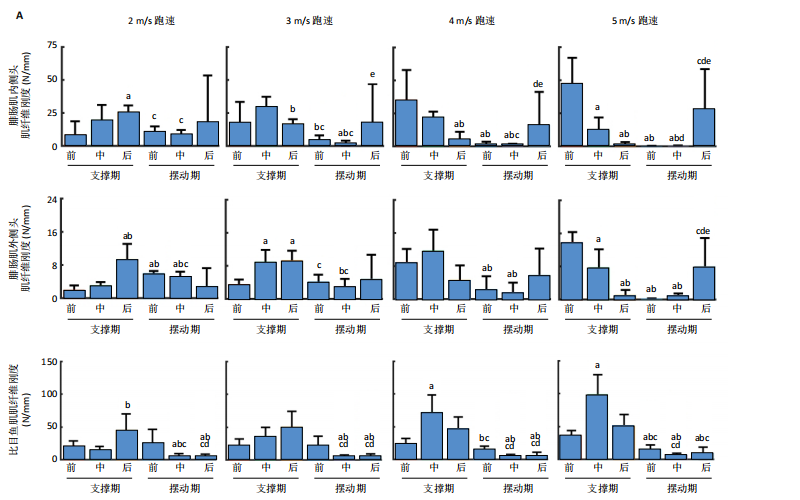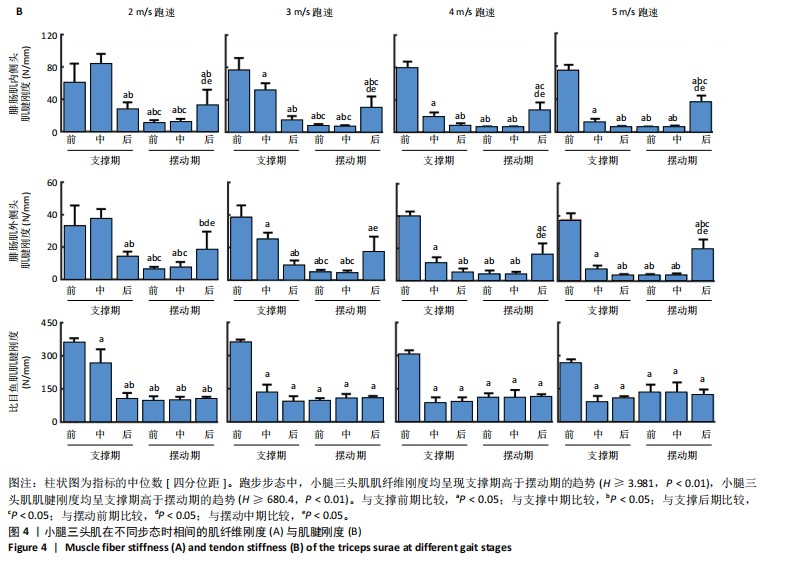中国组织工程研究 ›› 2025, Vol. 29 ›› Issue (35): 7529-7536.doi: 10.12307/2025.956
• 肌肉肌腱韧带组织构建 tissue construction of the muscle, tendon and ligament • 上一篇 下一篇
多关节运动中小腿三头肌肌纤维和肌腱实时连续刚度仿真分析
李 晨,刘 晔,倪新迪,张宇昂
- 北京体育大学运动人体科学学院,北京市 100084
Simulation analysis of real-time continuous stiffness in muscle fibers and tendons of the triceps surae during multi-joint movement
Li Chen, Liu Ye, Ni Xindi, Zhang Yuang
- School of Sport Science, Beijing Sport University, Beijing 100084, China
摘要:
文题释义:
刚度:指材料或结构在受力时抵抗弹性变形的能力,是材料或结构弹性变形难易程度的表征参数。材料的刚度通常用弹性模量来衡量,弹性模量=应力/应变。对人体活体组织来说,刚度往往因其生理状态而可变。
肌骨运动仿真:指基于生理学及生物力学模型,利用计算机运算重现人体力量和运动的技术。仿真模拟可以帮助人们了解人体的肌肉、关节和骨骼如何通过协同工作来移动和支撑身体,在所探求的指标实测成本过高、实测难度过大时具有极大优势。
背景:人体内骨骼肌内部肌纤维与肌腱的刚度受神经-肌肉系统调控而处于可变状态,而复杂多关节运动中肌纤维和肌腱的力学特性观测难度较高,肌纤维和肌腱的刚度实时变化规律尚不明确。
目的:以不同跑速及步态时相下小腿三头肌仿真数据为例,探究肌纤维刚度及肌腱的实时刚度变化规律。
方法:从Stanford大学网站获取5名长跑运动员不同跑速步态中小腿三头肌肌纤维激活、长度、速度参数及肌腱长度参数的OpenSim仿真结果,提取仿真所用Hill-Zajac骨骼肌模型中肌纤维及肌腱力-长度关系曲线的瞬时斜率,作为小腿三头肌肌纤维与肌腱的实时刚度,分析肌纤维与肌腱的刚度等指标在步态中的时序性变化。
结果与结论:肌纤维激活-长度-速度状态及肌腱应变的调节,使肌纤维与肌腱的刚度和受力呈相同变化趋势。相比较低跑速,较高跑速下的腓肠肌肌纤维刚度在步态支撑前期更高(P≤0.01),腓肠肌内侧头的肌腱刚度在支撑前期更高(P≤0.02),腓肠肌肌纤维及肌腱的刚度在支撑中期至摆动中期更低(P≤0.03),比目鱼肌肌纤维刚度在支撑期更高(P≤0.02)。各跑速下小腿三头肌肌纤维及肌腱的刚度均呈支撑期高于摆动前中期的趋势(P≤0.03),而腓肠肌在摆动后期的肌纤维刚度及肌腱刚度再度升高(P≤0.05)。结果显示跑速增加可提高支撑期的小腿三头肌肌纤维刚度及肌腱刚度,当跑速及步态时相变化时,腓肠肌与比目鱼肌具有不同的肌纤维及肌腱刚度变化规律,而腓肠肌可通过预激活现象在摆动后期提高肌纤维刚度及肌腱刚度。
https://orcid.org/0000-0002-4409-7057(李晨);https://orcid.org/0000-0001-9265-317X( 刘晔)
中国组织工程研究杂志出版内容重点:组织构建;骨细胞;软骨细胞;细胞培养;成纤维细胞;血管内皮细胞;骨质疏松;组织工程
中图分类号:
